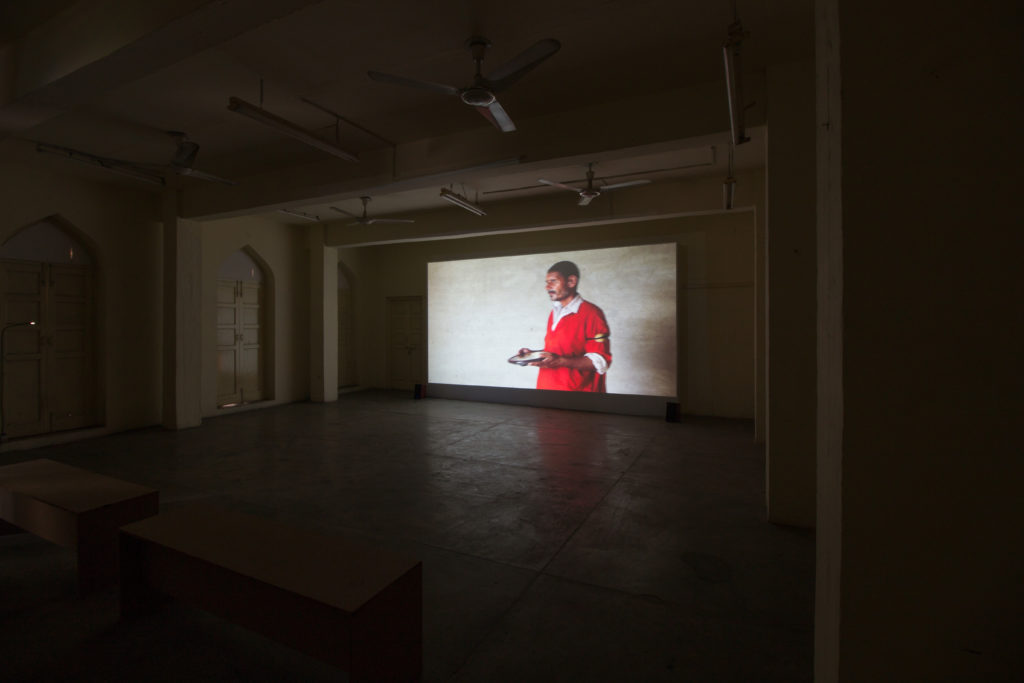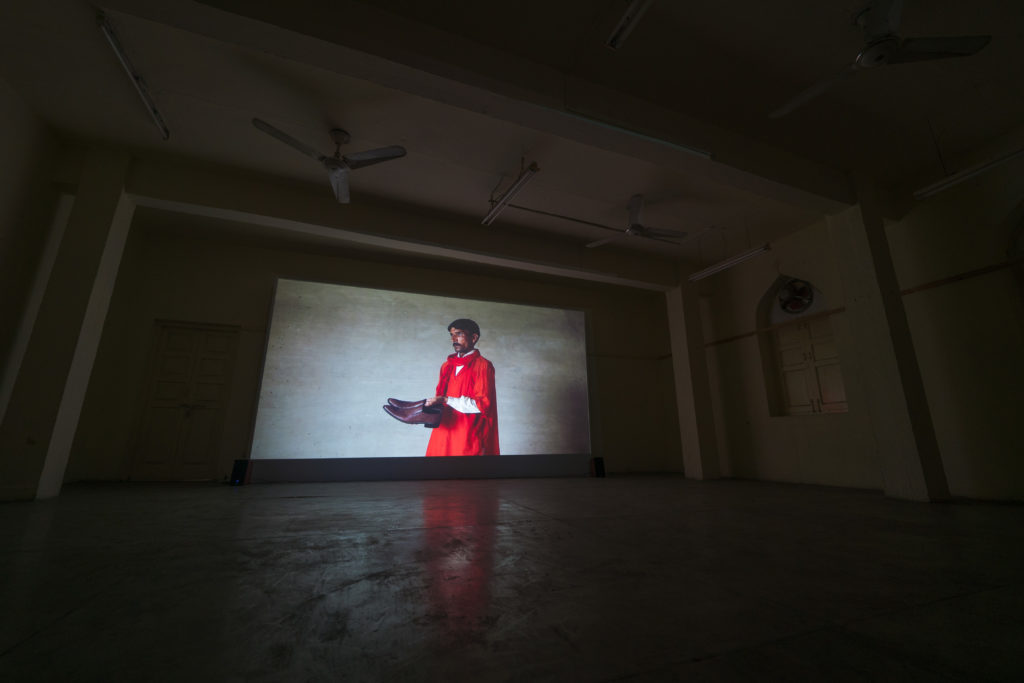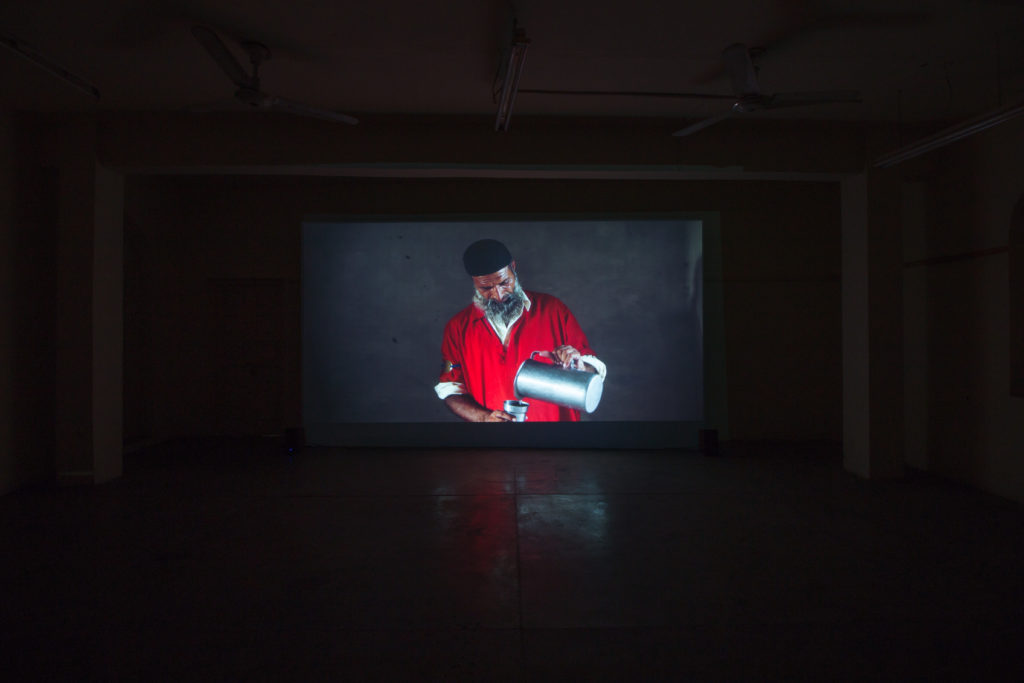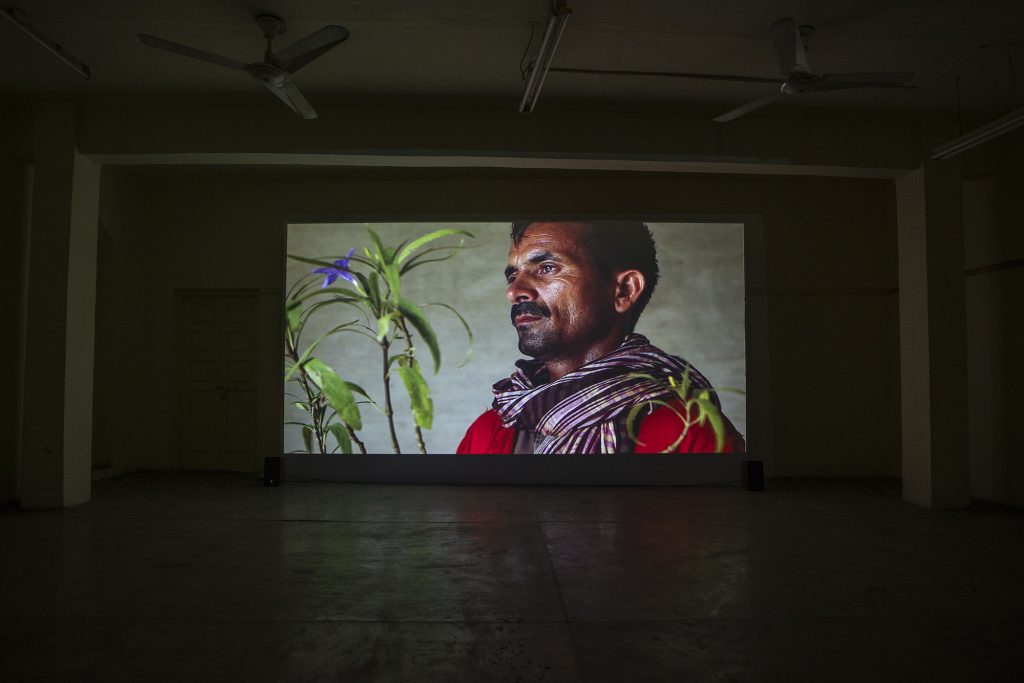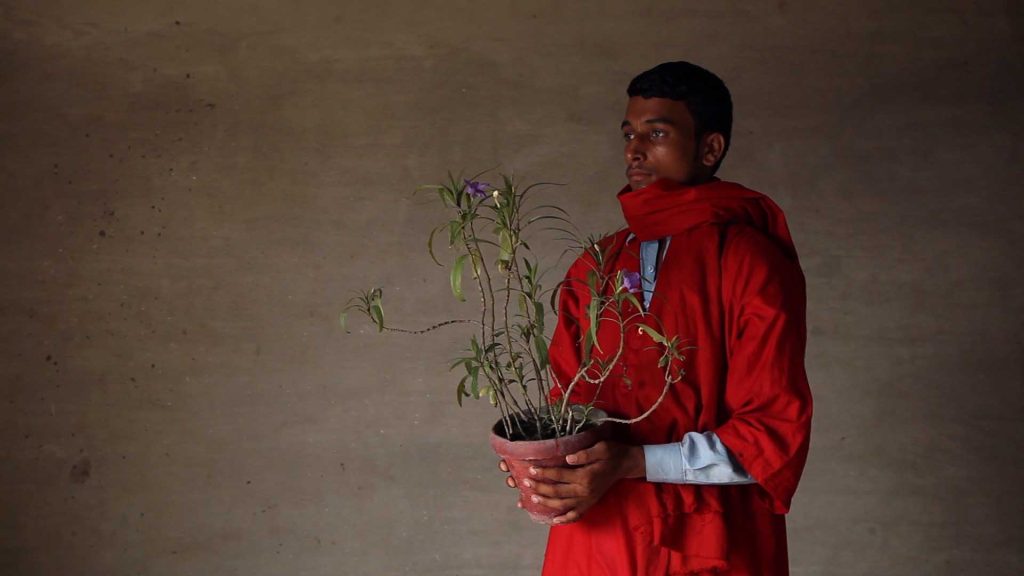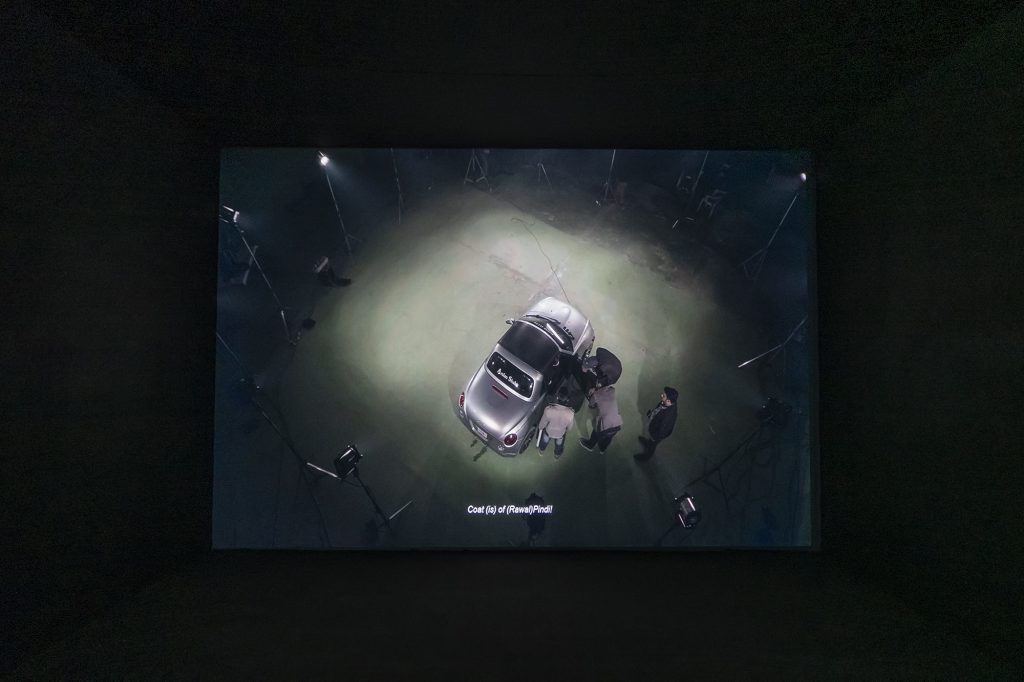Basir Mahmood
Multiple works
Moon-sighting, 2019
Single-channel video, duration: 37 min 48 secs
Power Between Weak, 2014
Single-channel video, duration: 3 min 45 secs
Monument of Arrival & Return, 2016
Single-channel video, duration: 9 min 36 secs
Under the high arches of Lahore’s railway station, trudge about its Kullis. The Kullis were luggage-carriers and porters in England, and came to Lahore when the British brought railways to the Indian subcontinent in the 1800s. Here, the porters shed their skin, became Indian, put on red shirts which sew numbers into their bodies, and became Coolies. In the far old age of 1947’s summer, the British stopped flagging their own trains, and left the subcontinent. The Coolies, now, became Kullis. Soon, the trains stopped breathing smoke, electric wires webbed over the Kullis and their skins oranged. The artist worked with the Kullis of Lahore’s railway station, whom he saw and observed while growing up in the same city. He saw the Kullis as persons who move but do not go. To make the work, artist only sent the instructions. The work was made in the absence of the artist, who was away waiting for the work to be made and delivered
لاہور ریلوے اسٹیشن کی بلند محرابوں تلے، اس کے ُقلی بوجھل قدموں سے چہل قدمی کرتے ہیں۔ ُقلی انگلستان میں سامان اٹھانے والے اور مزدور تھے اور وہ اس وقت لاہور آئے جب برطانوی 1800ء کے دوران ہندوستانی برصغیر میں ریلوے کا نظام لے کِر آئے۔ یہاں، مزدوروں نے اپنےآپ کو بدلا اور ہندوستانی بن گئے، سرخ قمیضیں پہنیں جن پر نمبر سلے ہوئے تھے۔ 1947ء کے موسم گرما میں انگریز برصغیر سے چلے گئے۔ جلد ہی ٹرینوں نے دھواں چھوڑنا بند کردیا، ُقلیوں کو بجلی کی تاروں نے جکڑ لیا، اور ان کی جلد نارنجی ہوگئی۔
فنکار نے لاہور کے ریلوے اسٹیشن کے ُقلیوں کے ساتھ کام کیا، جن کا ُاس نے اسی شہر میں جوان ہونے کے دوران مشاہدہ کیا۔ اس نے ُقلیوں کو ایسے انسان پایا جوحرکت تو کرتے ہیں لیکن جاتے نہیں۔ کام کرنے کے لیے فنکار صرف ہدایات بھیجتا تھا۔ کام فنکار کی غیر موجودگی میں کیا گیا جو کہیں دور کام کیے جانے اور بھیجے جانے کا منتظر تھا۔
Moon-sighting commissioned by the University of Leeds and the National Science and Media Museum, Bradford with funding from the Arts and Humanities Research Council

